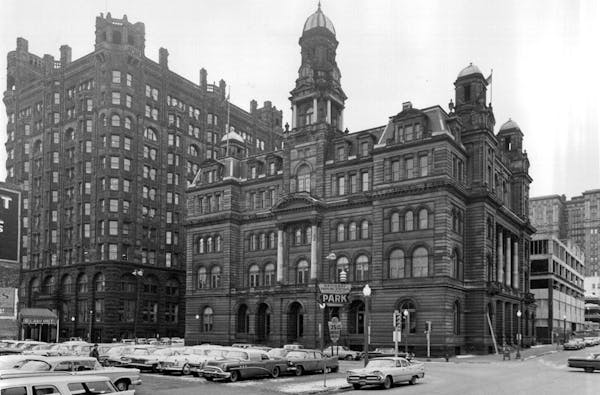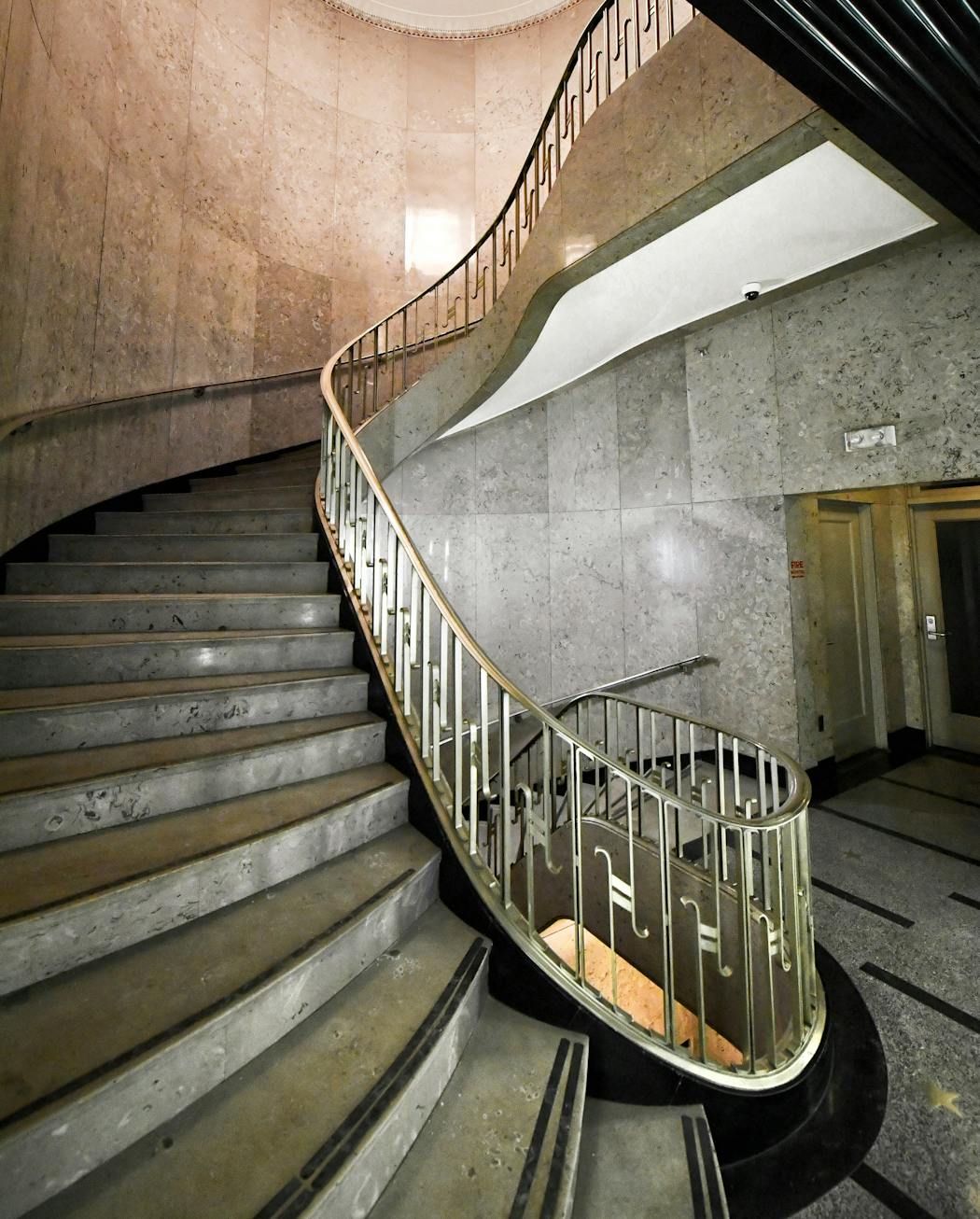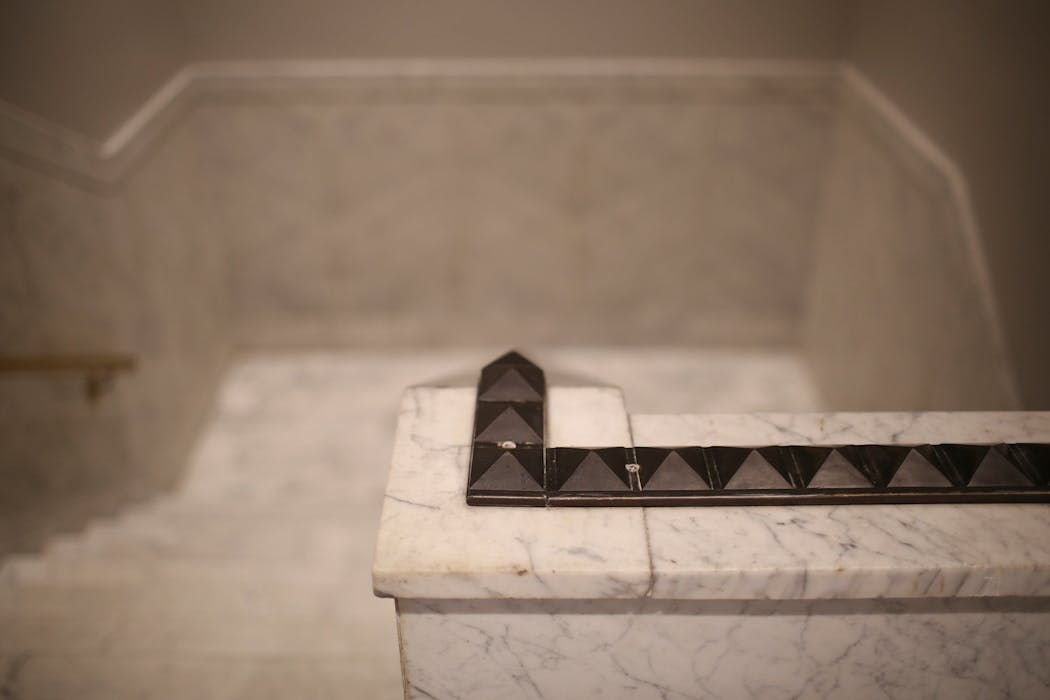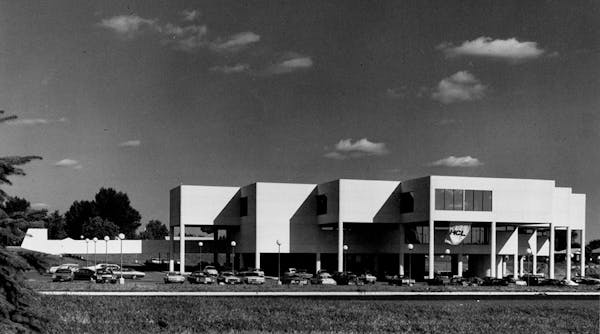Stairs seem so simple, so obvious.
But most early construction was out, not up. It wasn't until cultures became more sophisticated that steps were incorporated into structures.
Eventually, stairs became a science. The height, the depth — we have the staircase all figured out, thanks in part to Peter Nicholson, a Scotsman who wrote "A treatise on the construction of staircases and handrails ... Preceded by some necessary problems in practical geometry" in 1820.
Nicholson laid out the necessary components of a staircase: the "rough strings," placed under the steps perpendicular to the wall; the newel, or posts at the top of the flight; the bracketed stair, with notched rough strings; the pitching piece, to which the rough strings are attached at the top.
The curtain, the swan-neck, the knee — Nicholson revealed the details behind the ascent. But his book also contained a new invention: the curved staircase.
It was not just an innovation; it was an aesthetic leap. So much so that by the late 1820s, all of the smartest homes had graceful curved staircases with equally graceful curved handrails. Unlike gimmicky designs that go out of vogue just as quickly as they come into it, the curved staircase endured because it brought beauty and grace to something so plain and pedestrian.
Consider the staircase in the Rand Tower in Minneapolis.
Rufus Rand, a World War I aviator and utility magnate, commissioned the Rand, which would become Minneapolis' most modern skyscraper. He chose the finest talents of the time: Holabird & Root, a Chicago firm noted for its crisp modern designs. But the staircase, which pours down into the 1929 building's silvered lobby, revealed a romantic rather than modern sense of design.
The 1888 New York Life Insurance building had one of the most fantastical staircases ever constructed in the Gopher State. The main stairs were straightforward, a simple up-and-down affair, but they were flanked by spiral staircases decorated with delicate metalwork.
Those staircases went away in 1958 when the building was torn down for the First National Bank. Said bank did not have a fantastical staircase. By then, ceremonial classical stairs were out; streamlined modern was in. That meant white stone slabs floating on thin metal rails, like the understated staircase in the Capella Tower's atrium. No heavy carved balustrades, no thick piers or self-important newel posts.
Toward the end of the 19th century, escalators were perfected and patented, but remained mostly a novelty in part because they cost more to build than stairs. It wasn't until the 1960s that escalators became de rigueur in public spaces.
The IDS Crystal Court was built without public steps. Can you imagine the opening scenes of "The Mary Tyler Moore Show" with our Mary stomping up the steps? No, she glided upward on an escalator with frictionless grace.
Here's a new twist on escalators: Engineers are developing curved escalators. The Hexilator, still in prototype stage, is a motorized version of the circular staircase. Could it eventually eliminate stairs altogether?
No, there will always be stairs in homes and small buildings.
But the grand staircase is disappearing from our skyscrapers and large civic buildings. No one designs an atrium that harks back to old European palaces. There aren't any dukes and duchesses coming down the stone steps to be presented to the court.
In Minneapolis' Plymouth Building (now an Embassy Suites hotel) there's a flight of stairs that has been trod by a century's worth of shoes, which created slight depressions in the steps. The newel post is shiny from a hundred thousand hands that rubbed it for a second. Everyone who used those stairs made their mark.
Like all stairs, they were just a means of getting from here to there. There's no reason they have to look nice, but when they do, they're a pleasure to behold.
Next time you mount the well-worn stairs in the Plymouth or mount the modern, curving staircase in the Capella Tower, thank the architects who understood that there's value in beauty.
Finding an apartment may be easier for California pet owners under new legislation
What to stream this weekend: Conan O'Brien travels, 'Migration' soars and Taylor Swift reigns
Reality TV's Chrisleys are appealing their bank fraud and tax evasion convictions in federal court
Music Review: Taylor Swift's 'The Tortured Poets Department' is great sad pop, meditative theater







